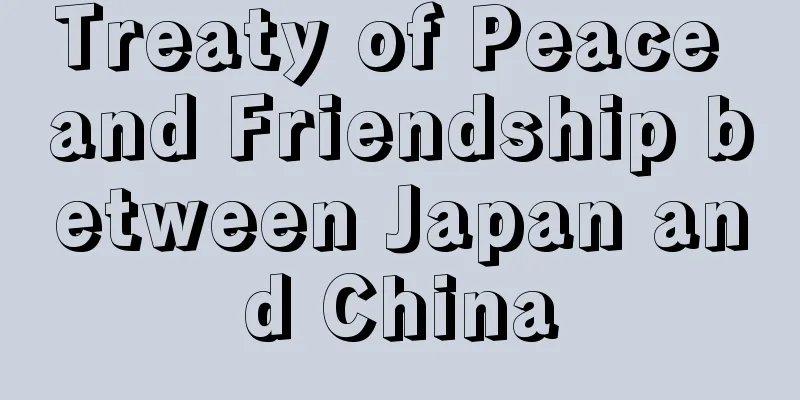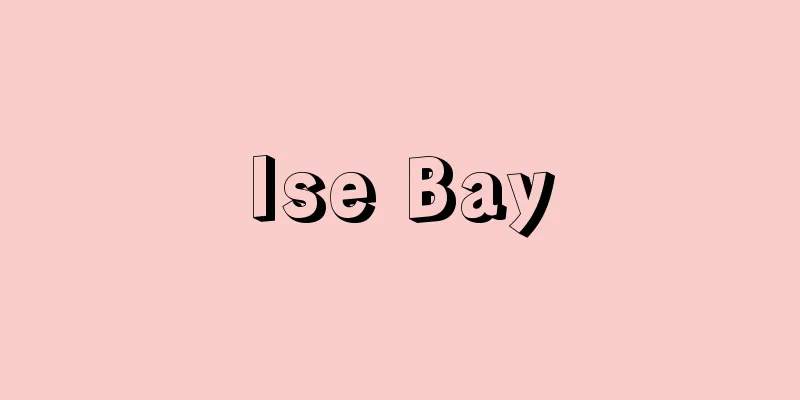Treaty of Peace and Friendship between Japan and China

|
The Treaty of Peace and Friendship between Japan and the People's Republic of China was signed on August 12, 1978 in Beijing by Japan's Foreign Minister Sunao Sonoda and China's Foreign Minister Huang Hua, and came into force on October 23, 1978, when instruments of ratification were exchanged in Tokyo. Since the normalization of diplomatic relations by the Japan-China Joint Communiqué of September 1972, Japan and China have concluded various working agreements and strengthened their friendly and cooperative relations. However, negotiations for the Treaty of Peace and Friendship, which began in November 1974, ran into difficulties over the so-called hegemony clause. Japan felt the need to generalize this clause and avoid provoking the Soviet Union at the time. However, by including a third country clause in the treaty, the two countries were finally able to reach an agreement in 1978, and the treaty, consisting of a preamble and five articles, was concluded. The preamble affirms adherence to the principles of the 1972 Joint Declaration and respect for the principles of the UN Charter, and expresses the hope of contributing to peace in Asia and the world. The body of the treaty then goes on to state: (1) that both countries will develop friendly relations based on the Five Principles of Peaceful Interaction, and will seek peaceful settlement of disputes in accordance with the principles of the UN Charter, and will refrain from the threat or use of force; (2) that both countries will not seek hegemony, and will oppose attempts by other countries to establish hegemony; (3) that both countries will further develop economic, cultural, and people-to-people exchanges; (4) that this treaty will not affect relations with third countries (the so-called third country clause); and (5) that the treaty will be in force for ten years, after which it may be terminated by either party with one year's notice. [Yasuo Ishimoto] Source: Shogakukan Encyclopedia Nipponica About Encyclopedia Nipponica Information | Legend |
|
1978年(昭和53)8月12日に北京(ペキン)で、わが国の外相園田直(すなお)と中国外相黄華(こうか)により署名され、10月23日に東京で批准書の交換が行われて発効した「日本国と中華人民共和国との間の平和友好条約」。1972年9月の日中共同声明によって国交が正常化して以来、日中両国の間では諸実務協定が締結されて、友好協力関係が強化されてきていたが、74年11月に開始された平和友好条約の交渉は、いわゆる覇権条項をめぐって難航した。わが国としてはこの条項を一般化し、特殊に当時のソ連を刺激することを避ける必要を感じていたからである。しかし条約に第三国条項を入れることで、78年にはようやく妥結し、前文と本文五か条からなるこの条約が締結された。前文で1972年の共同声明の諸原則の遵守と国連憲章の諸原則の尊重を確認し、アジアおよび世界の平和への寄与を希望したのち、本文では(1)平和五原則を基礎として友好関係を発展させ、また国連憲章の原則に従い、紛争の平和的解決を図り、武力の行使や威嚇に訴えないこと。(2)両国は覇権を求めず、また他の国による覇権確立の試みに反対すること。(3)経済、文化、民間交流をいっそう発展させること。(4)この条約は第三国との関係に影響を与えるものでないこと(いわゆる第三国条項)。(5)条約の有効期間は10年とし、その後は、いずれか一方の締約国の1年前の予告によって終了させることができることを定めている。 [石本泰雄] 出典 小学館 日本大百科全書(ニッポニカ)日本大百科全書(ニッポニカ)について 情報 | 凡例 |
Recommend
Drive - Drive (English), Trieb (German)
It is primarily a psychoanalytic concept, based on...
Toompea
…A port on the Gulf of Finland, it is the politic...
Country Gentleman - Inakashinshi
〘 noun 〙 A country gentleman. A man who pretends t...
Infighting - Infighting
...A sport in which opponents wearing gloves on b...
Autumn snowflake
...One of these large varieties is Gravitye Giant...
White-spotted tussock moth (Euproctis similis)
An insect of the Lepidoptera family, Lymantriidae ...
Mr. Kasatori
…In the second half of the 9th century, people ot...
Richard von Krafft‐Ebing
1840‐1902 German psychiatrist. Born in Mannheim, h...
Mount Koga - Helmet Mount
...The foothills that formed at that time have be...
Pittsburgh - Pittsburgh (English spelling)
Located in southwestern Pennsylvania, Pennsylvani...
Pelletier, PJ (English spelling) PelletierPJ
…One of the alkaloids contained in the bark of th...
coelacanth
〘Noun〙 (coelacanth) A general term for a lineage o...
Naganuma Moriyoshi - Naganuma Moriyoshi
Sculptor. Born in Ichinoseki, Mutsu (Iwate Prefec...
Fronde Rebellion - Fronde Land
During the childhood of King Louis XIV of France,...
Gonto Chord - Gonto Chord
...Non-harmonic tones are dissonant with the chor...









